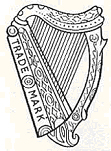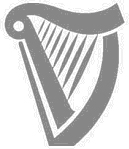-
When you click on links to various merchants on this site and make a purchase, this can result in this site earning a commission. Affiliate programs and affiliations include, but are not limited to, the eBay Partner Network.
-
Posts
1,859 -
Joined
-
Last visited
-
Days Won
13
Content Type
Profiles
Forums
NGC Journals
Gallery
Events
Store
Downloads
Posts posted by Zebo
-
-
-
-
Wow - sounds like a wonderful trip. It also sounds like you picked up some very nice pieces for your collection. Can't wait to hear what you do on your next visit.
-
On December 9, 2019 at 7:42 PM, Mk123 said:
-
On December 9, 2019 at 10:22 AM, World Colonial said:
deleted
-
-
deleted
-
3 hours ago, physics-fan3.14 said:
Congrats on a major achievement.
Show us some of your favourites, and explain why they are special.
The Sovereign was the chief coin used in the world for commerce during the height of the British Empire. The Sovereign was minted in five countries and at seven mints within those countries. The history along with the importance of the Sovereign is significant. during Queen Victoria's reign, the Sovereign was minted in two countries and at four mints within those counties. The other countries and mints were added during King Edward VII and George V's reign.The Reign of Queen Victoria (1837-1901) - House of Hanover
Australian Sovereigns:
1855-1856 Imperial Young Head; Australian Reverse
1857-1870 Australian Victoria Head; Australian Reverse
1871-1887 Imperial Young Head; Shield Reverse and St. George Reverse
1887-1893 Imperial Jubilee Head; St. George Reverse
1893-1901 Imperial Veil Head; St. George ReverseStarting in 1855 until 1870, Sovereigns minted in Australia (Sydney) were different than the ones minted in London. The Sydney Sovereigns were thought to be inferior to the British ones and at one time command only 19 Shillings to the Sovereign.
After the Royal Mint’s “Trial of the Pyx” in 1856, it was revealed that the Sydney Soverigns tested had an average of 0.02% more gold than the London standard required. They also used silver as an alloy instead of copper as the British Sovereigns had. The Sydney Sovereign soon became the Sovereign of choice in Asia and other parts. Many were melted to extract the higher percentage of gold and silver.
The 1855 and 1856 Sydney sovereigns had Queen Victoria's first portrait on the obverse, but had a different legend and the unique Australian reverse. The Australian reverse spelled out the Sydney Mint as well as Australia, which is interesting because at that time Australia was made up of six separate colonies and did not become the Commonweath of Australia until 1901.Starting in 1857, England demanded that Australia should not use the same portrait of Queen Victoria as the Great Britain sovereigns. The Australian's came up with their own design for the Obverse while keeping the Australian reverse. The 1857 shows this difference and was used until 1871 when England ordered that all sovereigns should conform to British standards (obverse, reverse and metal content).Starting in 1871 the Sydney Mint, closely followed by the Newly established Melbourne Mint, produced Sovereigns with Queen Victoria's young portrait including both the shield and St. George reverse.From 1887 through 1893, Australia produced Sovereigns with Queen Victoria's Jubilee portrait and St. George reverse.From 1893 through 1901, Australia produced Sovereigns with Queen Victoria, old or veil portrait and St. George reverse. In 1899, Australia's Perth Mint started operations. -
On December 7, 2019 at 12:48 PM, RWB said:
Deleted
-
3 hours ago, doctortom said:
I have two very common and worn Conder tokens that have been countermarked. Both have a Roman numeral 1 to the left of the bust and a capital C to the right. I take it they were used by someone, somewhere as one cent pieces. Does anyone know more about them?
Thanks in advance for your help.
Tom Pesacreta
So - did the Welsh, in 1795, predict the outcome of the Guinness Harp trade mark dispute in 1922?
The harp, which serves as the Guinness emblem, is based on a famous 14th century Irish harp known as the "O'Neill" or "Brian Boru" harp which is now preserved in the Library of Trinity College Dublin. The harp device has been synonymous with Guinness since 1862 when it was used as a symbol on the first bottle label for GUINNESS®. It was registered as a Guinness company trademark in 1876. It is because of the harp trademark that Guinness named its first lager 'Harp' in 1960.

1862 harp

current harp
The harp is one of three elements that make up the GUINNESS® livery. The other two elements are the GUINNESS® word and Arthur Guinness's famous signature. There have been a number of changes to the design of the harp device over the years including a reduction in the number of strings shown. The current harp was introduced in 2005 when a new brand livery was launched.
The harp is also the official national emblem of the Republic of Ireland and can be found on the Republic's coinage. However, there is a difference between the Irish government harp and the Guinness harp. As Guinness had trademarked the harp symbol in 1876, the Irish Free State Government of 1922, had to turn the official government harp the other way to differentiate between the trademarked Guinness harp and the official State emblem. The distinguishing feature between the two harps is that the Guinness Harp always appears with its straight edge (the sound board) to the left, and the government harp is always shown with its straight edge to the right.
-
- Popular Post
- Popular Post
Deleted
- Revenant, kbbpll and Crawtomatic
-
 3
3
-
I believe you only have to submit the NCS form. My question is what exactly are you having conserved and why? What grades do you expect to receive?
-
55 minutes ago, World Colonial said:
World coins are too fragmented. Might be an options with certain segments but would say this is also contingent upon noticeably higher acceptance of TPG first which I don't believe will ever happen with most non-US collectors in most markets. Equivalent financialization of "collecting" isn't going to happen elsewhere (ever) because the credit bubble isn't going to last long enough to make it possible, even if the market will otherwise accept it which I don't believe either.
The world coin market is fragmented and adoption of TPG in most areas will probably not be accepted or will be slow to be accepted. But those markets are not the primary markets. Who uses the registries the most? With the slow, but increasing acceptance of TPG in the UK, Australia and Canada - this would be pertinent. The U.S. as the largest population that uses the registries - it's does carry over to the world collections. The argument that the vast majority does not use TPG is very true, but they are not the ones who use the registries so CAC and Wings are meaningless - as are the registries. Even though Wings has not caught on with the world collectors who use the registries - it is still a valid point about the slippery slope of slicing the apple too many times. It also should not be overlooked as NGC would be picking CAC over Wings in their decision if they decided on having a U.S. and World CAC registry.
-
-
29 minutes ago, World Colonial said:
Wings is irrelevant because they don't make a market in the coins they sticker. There is certainly no reason to believe non-US collectors will ever care about it. I doubt hardly any collectors even know who they are. I recently bought and returned a coin with their sticker and the seller made it evident they had no idea about it either.
I agree, but if you go down this road - U.S. Coins, why not world coins and then why not wings? Just another way to slice the apple.
-
If NGC decided to opt-out, I support that decision 100%. This reminds me of boxing. You used to have the standard weight classes with one champion. Now there are several champions in way too many made up weight classes.
And then what about Wings?
-
1 hour ago, Zebo said:
Basically the same as CAC only for world coins. I have a couple, but I bought them because of the coin not the sticker.
I should add that Wings called it right. Even though I bought the coins for their appearance and the sticker did not have any role in making up my mind - they are very nice examples and Wings recognized the quality as well. Just don't think I'd pay for a second opinion unless maybe it was a very high value coin.
-
1 hour ago, Revenant said:
So... What are the stupid WINGS stickers I kee seeing on ebay?
Basically the same as CAC only for world coins. I have a couple, but I bought them because of the coin not the sticker.
-
4 hours ago, Mk123 said:
I'm so glad I got out of collecting US coins and am having fun collecting world coins........don't need to worry about CAC stickers!!
You only have to worry about the Wings stickers (just joking). I'd be against such a thing here.
-
55 minutes ago, Revenant said:
Well, that's one of the reasons my reply mentioned a NCLT and a circulation strike coin.
With NCLT, most of them have mintages that are quite high vs the coins in that thread. There are exceptions though.
Listing both NCLT and circulating coins in the thread makes sense and adds a bit to the OP.
-
- Popular Post
- Popular Post
-
To not detract from the OP thread What's is your lowest mintage coin - I see proof coins being mentioned which got me thinking.
should NCLT coins fit into the OP's intent on listing low mintage coins? What's the difference between NCLT coins and Proof coins? I see them as one and the same. Anyone think differently?
-
Sounds like a great trip. Would love to tour the Royal Mint. The rail is also a fun and easy way to travel. While a bit out of your way - I'd like to make a stop at Chards. But that's just me and becuse I've never had the chance to visit their shop. Dealt with them - but not face to face.
-
So why do you use an easel/stand? To display a holder coin on your desk, to photograph it, or for a display to sell it? Just wondering.



















Registry Change
in US, World, and Ancient Coins
Posted
Tell us more about the lawsuit. Most likely involves promises (functionality) made (and/or milestones missed). Shame, but I hope NGC is compensated well. I view the registry using both the the old and new software.